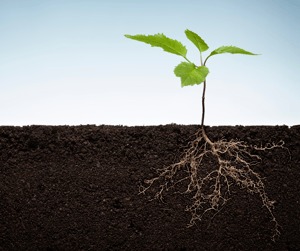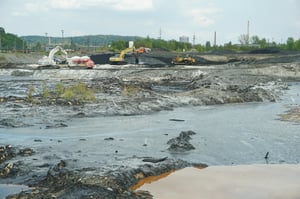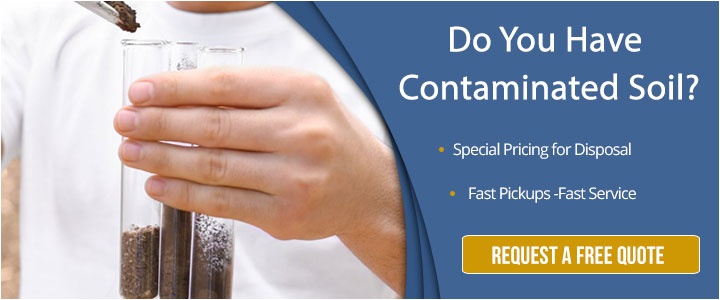Soil contamination poses a significant environmental challenge, often requiring innovative solutions.
Enter phytoremediation – a process that harnesses the remarkable capabilities of plants to cleanse soil, water or air of contaminants. Imagine a verdant landscape not just thriving but also purifying its surroundings, offering a natural remedy to pollution woes.
Phytoremediation isn't merely a scientific concept. It's a green revolution, and In a world increasingly conscious of sustainability and ecological balance, phytoremediation stands out among the tools available to remediate contaminated soil.
What Is Phytoremediation?
Phytoremediation is a technique used to clean up contaminated soil, water or air using plants. This sustainable and environmentally-friendly technique harnesses the natural abilities of plants to uptake, transform, stabilize or remove contaminants from the environment through various mechanisms like absorption, accumulation, volatilization or degradation.
environmentally-friendly technique harnesses the natural abilities of plants to uptake, transform, stabilize or remove contaminants from the environment through various mechanisms like absorption, accumulation, volatilization or degradation.
By leveraging the natural processes of plant growth and metabolism, phytoremediation offers a cost-effective and aesthetically pleasing alternative to traditional remediation methods.
Through careful selection of suitable plant species and consideration of site-specific factors, phytoremediation holds promise for remediation projects ranging from industrial sites and brownfields to agricultural lands and urban areas.
How Is Phytoremediation Used To Treat Heavy Metal Contaminated Soils?
When it comes to heavy metal contaminated soils, certain plants have the ability to absorb, accumulate and sometimes even detoxify heavy metals through various mechanisms like rhizofiltration, phytoextraction, phytostabilization and phytovolatilization.
Here's a brief overview of these mechanisms:
- Rhizofiltration: This involves the absorption and accumulation of contaminants by plant roots. As water containing contaminants passes through the plant roots, the contaminants are taken up by the plants and stored in their tissues.
- Phytoextraction: In this process, plants accumulate heavy metals from the soil into their above-ground biomass. Once the plants have absorbed the contaminants, they can be harvested and removed from the site, effectively removing the contaminants from the soil.
- Phytostabilization: This method involves using plants to immobilize heavy metals in the soil, reducing their bioavailability and preventing them from entering the food chain or leaching into groundwater. Certain plants can alter the soil pH or produce compounds that bind to heavy metals, making them less soluble and mobile.
- Phytovolatilization: Some plants have the ability to absorb heavy metals from the soil and translocate them to their aerial parts, where the metals are converted into volatile compounds and released into the atmosphere.
Phytoremediation is often considered a cost-effective and environmentally-friendly approach to remediate contaminated sites, especially in areas where traditional methods like excavation and disposal are not feasible or too expensive. However, it can be a slow process and may not be suitable for all contaminants or soil types. Additionally, the effectiveness of phytoremediation depends on factors such as plant selection, soil conditions, and contaminant concentrations.
What Metal-Contaminated Soils Can Phytoremediation Be Used To Treat?
Phytoremediation can be used to treat a wide range of metal-contaminated soils, including heavy metals. In fact, phytoremediation is particularly effective for heavy metals like lead, cadmium, mercury, chromium, arsenic, zinc, nickel, copper and manganese.
phytoremediation is particularly effective for heavy metals like lead, cadmium, mercury, chromium, arsenic, zinc, nickel, copper and manganese.
Soils contamination from heavy metals can happen after mining activities, industrial processes, smelting operations and disposal at waste sites occur.
You may see phytoremediation used in:
- Urban and agricultural areas
- Brownfields and landfills
- Contaminated watersheds
- Military sites
- Acid mine drainage areas
Phytoremediation can be applied to various types of metal-contaminated soils, offering a sustainable and environmentally friendly approach to remediation. However, the effectiveness of phytoremediation may vary depending on factors such as the type and concentration of contaminants, soil characteristics, climatic conditions and plant species selected for remediation.
When Is Phytoremediation Not Effective?
While phytoremediation is a valuable technique for remediating certain types of contaminated soils, there are situations where it may not be the most suitable treatment option.
For example, phytoremediation may not be effective for soils with extremely high concentrations of contaminants beyond the tolerance levels of plants. In these cases, the remediation process could be too slow or ineffective in reducing contamination to acceptable levels within a reasonable timeframe.
Other situations where phytoremediation may not make sense include:
- Contaminants with Low Bioavailability: Some contaminants may be present in forms that are not readily accessible to plants or are tightly bound to soil particles, reducing their bioavailability. Phytoremediation may not effectively extract or immobilize such contaminants, making other remediation methods more suitable.
- Large-Scale Contamination: Phytoremediation is often a slower process compared to traditional remediation techniques like excavation and soil washing. It may not be practical for remediation of large-scale contaminated sites or situations where rapid cleanup is necessary, such as emergency response scenarios.
- Unsuitable Soil Conditions: Certain soil characteristics, such as low permeability, high salinity, extreme pH levels, or waterlogged conditions, may limit the effectiveness of phytoremediation. In such cases, plants may struggle to establish and grow, hindering the remediation process.
- Presence of Non-Target Contaminants: Phytoremediation focuses on specific contaminants that can be absorbed or immobilized by plants. If the contaminated soil contains non-target pollutants such as organic compounds or radioactive substances, phytoremediation alone may not adequately address these contaminants.
- Risk of Plant Uptake in Food Crops: In agricultural settings, where phytoremediation may be applied to reduce heavy metal contamination in soils, there is a risk of heavy metals being taken up by food crops. This could pose potential health risks if the harvested crops are consumed by humans or animals.
- Long-Term Maintenance and Monitoring: Phytoremediation often requires long-term maintenance and monitoring to ensure the effectiveness of the remediation process and prevent recontamination. The need for ongoing management may make it less practical or cost-effective compared to other remediation methods in some cases.
While phytoremediation offers many benefits, it's important to carefully assess site-specific factors and consider alternative remediation options to determine the most appropriate approach for addressing contaminated soils. You can read about some of these alternative options like containment, chemical oxidation and others in our article, How To Clean Up Contaminated Soil.
Other Important Considerations With Phytoremediation
In addition to the factors mentioned above, there are several other important considerations when implementing phytoremediation. These include:
- Conducting a thorough site assessment to understand the extent and nature of contamination, soil characteristics, hydrology and vegetation
- Choosing the right plant species, examining their growth rate, root depth and adaptability to site conditions
- Soil amendments that may be needed to enhance plant growth, such as organic matter, compost or adjustments to the pH levels
- The need for regular monitoring of plant health, soil quality and contaminant levels to make any necessary adjustments
- Potential risks, such as the potential for contaminants leaching into groundwater
- Compliance with local, state, and federal regulations governing phytoremediation activities, including obtaining permits, adhering to disposal requirements for harvested plants or contaminated soil, and ensuring worker safety
Another important consideration is the need for hazardous waste disposal. A hazardous waste transporter specializes in the safe transportation and disposal of hazardous materials, including heavy metals.
In the context of phytoremediation of heavy metal contaminated soils, a hazardous waste transporter may not directly participate in the remediation process itself, but may be needed to play a role in the logistics of the project.
For example, here are some of the ways a hazardous waste transporter might be involved in the phytoremediation process:
- Transportation of Contaminated Soil: If the contaminated soil needs to be excavated and transported off-site for treatment or disposal, a hazardous waste transporter is responsible for safely transporting the soil to the remediation facility.
- Disposal of Harvested Plants: In cases where phytoextraction is used as the remediation technique, the plants that have accumulated heavy metals may need to be harvested and disposed of properly. A hazardous waste transporter could assist in transporting these harvested plants to an appropriate disposal facility.
- Management of Contaminated Water: In some phytoremediation techniques such as rhizofiltration, contaminated water is passed through plant roots to remove heavy metals. If this water needs to be treated or disposed of, a hazardous waste transporter might be involved in transporting it to a treatment facility or a designated disposal site.
- Compliance and Regulatory Requirements: Hazardous waste transporters are well-versed in the regulations and requirements surrounding the transportation and disposal of hazardous materials. They can ensure that all necessary permits, paperwork, manifests and safety protocols are followed throughout the phytoremediation project.
While a hazardous waste transporter may not directly participate in the phytoremediation process itself, their expertise in handling hazardous materials and navigating regulatory requirements can be valuable in ensuring that the project is conducted safely and in compliance with environmental regulations.


Comment